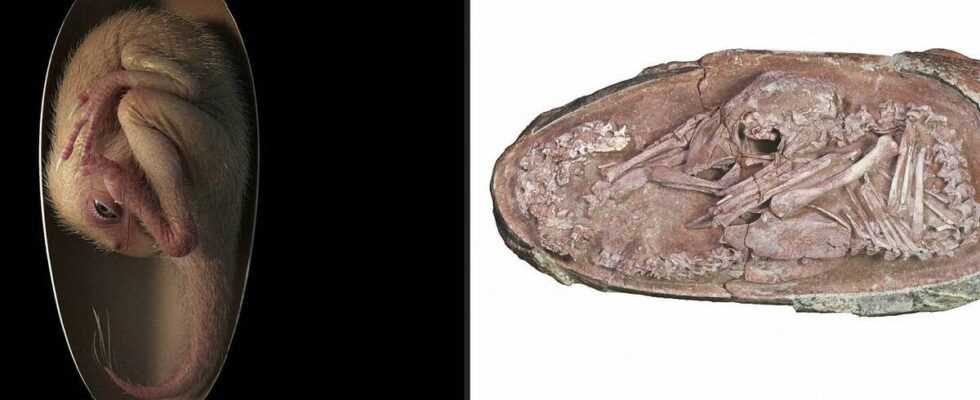A dinosaur embryo over 66 million years old (scientists say it is 72 to 66 million years old), forgotten for ages. This is not the scenario of yet another installment of a tired franchise but an early Christmas present for dinosaur aficionados. For the past twenty-four hours, the scientific world and paleontology enthusiasts have been in turmoil over the beautifully preserved embryo that was discovered in Ganzhou, China on Tuesday. This fossil, dubbed “Baby Yingliang” by the researchers, was preparing to come out of its shell. This is what the scientists behind the find explained.
This specimen was one of a group of several egg fossils that were left behind and forgotten over the years. The researchers, who suspected that they might contain dinosaurs, then scratched part of the shell to finally discover Baby Yingliang. They hope to be able to study the embryo with more precision using imaging techniques and thus reveal its entire skeleton.
“It is one of the best dinosaur embryos ever found”, says Fion Waisum Ma, from the University of Birmingham and co-author of the study linked to the discovery of Baby Yingliang published in the journal iScience. “One of the most beautiful fossils I have ever seen”, confirms Professor Steve Brusatte, from the University of Edinburgh and member of the research team. If it has been so well preserved, it is probably thanks to a slide of mud that buried it and protected it from scavengers. ” It is a magnificent discovery, get enthusiastic about Release Philippe Taquet, CNRS researcher and current president of the International Commission for the History of Geology.
Drag the middle slider below to compare the fossil with the embryo reconstruction.
“Egg-stealing lizard”
The embryo “Looks exactly like a baby bird coiled in its egg”, specifies the researchers. Young Yingliang was indeed found with his back bent, his feet on either side of the beak, his head tucked into his stomach. A position well known in birds but which had never before been observed in dinosaurs. After a few moments of hatching, the chicks stabilize their heads by placing it under a wing, while piercing their shells using their beaks. When the embryo cannot get into this position, the risk increases that it will fail to hatch and survive. “This is the first time that we can see so finely the hatching position of a feathered dinosaur dating from the Late Cretaceous, takes over Philippe Taquet from CNRS. We can vividly confirm that today’s birds break their shells the same way. ”
This discovery “Provides further evidence that the many characteristics of birds today derive from their dinosaur ancestors”, specifies Steve Brusatte. In this position, Baby Yingliang was about to come out of the egg using a harder “tooth”, called a “diamond”, located on the top of his beak, notes Philippe Taquet, that is to say the “Same method as a chicken today”. The method of hatching the dinosaurs could have been similar to what crocodiles do, which also adopt a seated posture, but with their heads tilted to their stomachs.
But Baby Yingliang is neither a bird nor a crocodile. It belongs to the family of oviraptorosaurs, whose name means “egg-stealing lizard”. Oviraptorosaurs were feathered dinosaurs living in Asia and North America during the Late Cretaceous period. They could have various shapes of beaks, as well as different diets. They ranged in size from apes to gigantoraptors, which averaged 8 meters in length.
Gobi Desert
Besides, this is not the first discovery of a dinosaur egg. The first were found in France, in the region of Provence. China is still known for its important fossil deposits, especially in the Gobi Desert, on the border with Mongolia. With the Baby Yingliang embryo, “Comparisons will be made possible with adult specimens. The growth of the species will be better understood ”, adds Philippe Taquet. Baby Yingliang is 27 centimeters from head to tail. It rests in a 17-centimeter-long egg kept at the Yingliang Stone Natural History Museum. In adulthood, it would have measured between 2 or 3 meters long and would have fed on plants.
Future work on the embryo could provide new knowledge. “We could find organic fragments in this embryo, which would be a first in this case, anticipates Philippe Taquet. There may also be remnants of red blood cells. The idea of giving birth to a dinosaur is still unlikely, because DNA is destroyed over the years. But new discoveries can make it possible, for example, to bring knowledge to medicine. ”
